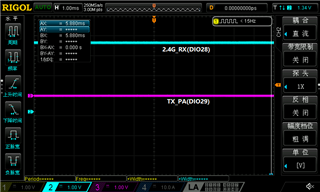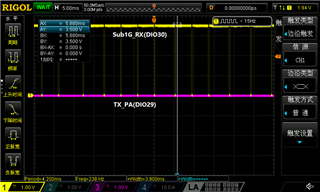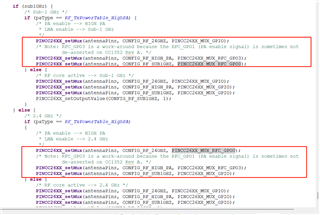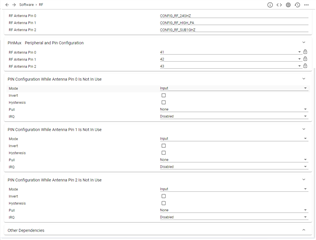Hi TI.
My target is based on SimpleLink SDK v5.20 sensor example. There are 3 RF control IOs to switch antenna as below:

I test the RF IOs level in 2.4G rx and SubG rx using an oscilloscope, and the IO level waveform is as below:


The first waveform is when target is receiving 2.4G packets and another target is sending 2.4G packets.
The second waveform is when target is receiving SubG packets and another target is sending SubG packets.
We can see there is a little different between the two waveform.
In 2.4G rx, the high_pa IO (DIO29) keeps low and 2.4G IO (DIO28) keeps high when receiving 2.4G packets, and this phenomenon is reasonable.
In SubG rx, the high_pa IO (DIO29) also keeps low, this is reasonable. However the SubG IO (DIO30) doesn't keep high, instead, DIO30 goes down (this will turn off RF path) after each SubG packets received and then goes up.
And then, we use CC1352P1 LaunchPad and Smart RF Stuido to do the same test and get the same phenomenon.
So, my question is
1, is the SubG IO (DIO30) waveform reasonable? is it as TI expacted?
2, based on question 1, if so, why is subg IO (DIO30) different from 2.4G rx (DIO28 always keeps high) and why does SubG IO (DIO30) go down after each packet received which will turn off the RF path?
3, based on question 1, if not, where is the problem, how to solve the problem to make subg IO (DIO30) keep high when receiving packets?
Thank you very much.



